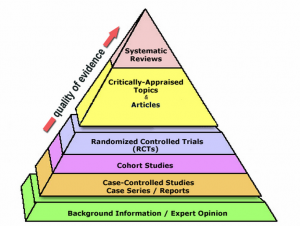About systematic reviews

A systematic review is a secondary research method that identifies and evaluates evidence from existing data in primary research studies.
Commonly, systematic reviews are used in healthcare research to assess the evidence on whether a medical intervention is effective in treating a certain condition.
Definition
“A review of a clearly formulated question that uses systematic and explicit methods to identify, select, and critically appraise relevant research, and to collect and analyse data from the studies that are included in the review. Statistical methods (meta-analysis) may or may not be used to analyse and summarise the results of the included studies.”
Features of a systematic review
A systematic review has these key features:
- It addresses a research question that is clearly defined and specific.
- It follows a rigorous methodology by adopting a clearly pre-defined protocol.
- It is an exhaustive search of the literature that is carried out in accordance with the protocol.
- All evidence is considered and only excluded if it does not meet the eligibility criteria.
- The included studies are critically analysed, especially for the risk of bias.
- It ideally involves more than one person.
For HDR candidates
A PhD or a Masters by Research thesis will include a chapter devoted to a review of the literature. This type of review is known as a traditional or narrative review, or simply a literature review.
The following table outlines the different features of a systematic review and a traditional literature review.
Systematic review vs. Literature review
| Features | Systematic review | Literature review |
|---|---|---|
| Aim | Tightly specified objectives to answer a specific research question | Gain a broad understanding and description of a field |
| Scope | Narrow focus | Big picture |
| Planning the review | Transparent process with documented audit trail defined in a protocol | Nothing defined, allows for creativity and exploration |
| Searches | Rigorous and comprehensive search for ALL studies, explicit search strategy across numerous sources | Searching is probing, moving from study to study, following-up leads |
| Study selection | Predetermined criteria for including and excluding studies uniformly applied | Selection is variable as determined by the reviewer |
| Appraisal | Checklists to assess the quality of studies | Based on the reviewer’s opinion |
| Synthesis | Tabular format with short summary answers | Discursive |
| Methodology | Must be presented for transparency | Not necessarily provided |
| Inferences | Based on all available evidence | Based on a sample of the evidence |
| Timeline | Months to years (average 18 months) | Weeks to months |
| Authors | Three or more | One or more |
| Value | Connects practising clinicians to high-quality evidence; Informs evidence-based practice | Provides a summary of literature on a topic |
Watch the following short video to learn about the difference between a systematic review and a meta-analysis.
Systematic review vs Meta-analysis (5 mins)
Systematic review vs Meta-analysis (5 mins) by Research Masterminds (YouTube)
Some brief information about other types of reviews, such as scoping reviews, rapid reviews, and meta-analyses is available from the library guide: Systematic Reviews.
Benefits of a systematic review

A systematic review has several advantages, including:
- Being considered the highest level in the hierarchy of literature evidence.
- Provides a definitive answer to a question, commonly about therapy, prevention, and causes of disease or harm.
- The methods used to find and select studies reduce bias and are more likely to produce reliable and accurate conclusions.
- Summarises findings from multiple studies, reducing bias when drawing conclusions and making the findings more reliable.
- Findings might be applied to everyday practice or to inform policy.
- Identifies knowledge gaps that call for more research.
Benefits for HDR candidates
Conducting a systematic review provides several benefits:
- it fulfills the request made by your supervisor to conduct the systematic review
- it contributes to your thesis
- the paper can be published
- it contributes to your research knowledge of the topic.
Test your knowledge

